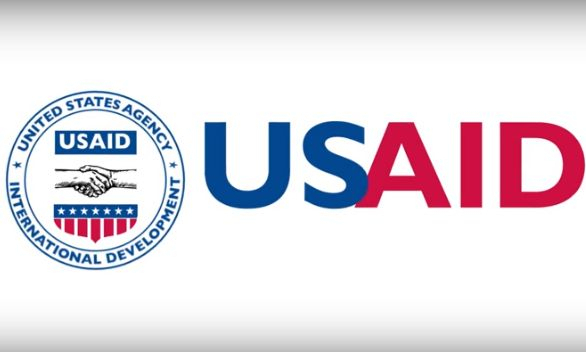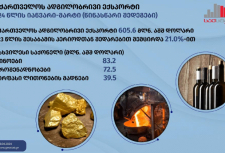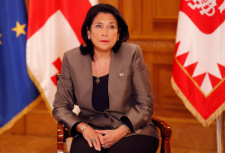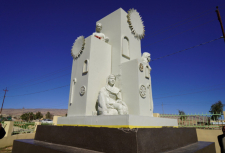USAID has arranged an attraction of unprecedented generosity in the CIS countries

In the second half of 2022, the USAID agency significantly increased funding for projects in the post-Soviet space. Which countries and spheres are targeted by the American "humanitarian hawks".
Financing of the so-called "democracy support" in the CIS countries through the US Agency for International Development (USAID), for the second half of 2022 amounted to $248 million. For comparison: for the whole of 2021, USAID invested $243 million in these countries (data from the official website usaid.gov).
The largest recipients of grants were Armenia, Georgia and Moldova, but the countries of Central Asia were not deprived either. And the main goal of the "humanitarian hawks" (as the head of the USAID agency Samantha Power calls herself) is young people and journalists.
In Georgia alone, USAID allocated $15 million for educational purposes in the second half of this year, with a special emphasis in the agency's projects on the need to destroy "gender stereotypes". Americans intend to improve the quality of Georgian education by retraining teachers. A grant of $250 thousand was awarded to journalism teachers at local universities – they will have to train the "right" journalists.
"It was the same with Ukraine at first," comments Evgeniya Voiko, associate professor at the Financial University under the Government of the Russian Federation, on the agency's investments in youth and the media.
USAID turned out to be even more generous in the field of "economic democratization": in 2021, the fund launched a five-year program in Georgia for $330 million. The officially announced goal of these investments is to reduce Russia's economic influence.
USAID does not skimp on funds for the "development of democracy" and "independence of the media" in Armenia as well: in the second half of this year, two large grants were allocated to the country – for $120 million and $4 million.
Maintaining the necessary degree of anti–Russian rhetoric in the local media is a common goal for USAID to work in the post-Soviet countries. However, in Moldova and Central Asian countries, the US agency places special emphasis on the economy in financing. Namely, it is trying to weaken the economic ties of these countries with Russia and redirect commodity–money flows.
Thus, over the past six months, USAID has allocated $50 million to Moldova, most of which is expected to be spent on expanding trade with the European Union and creating an appropriate transport and logistics infrastructure.
"Reducing Central Asia's dependence on Russian markets and export routes was a long–term priority, but now it is an urgent need," the agency's website says. It was decided to increase the grant for the reorientation of exports to Turkmenistan, Tajikistan, Kazakhstan, Kyrgyzstan and Uzbekistan by $15.2 million to $34 million. This money will be used to assist in logistics and finding contacts with contractors in the West. Today, Russia is the key trade and economic partner of the Central Asian countries.
sputnik-georgia.ru
Tags:
USAID has arranged an attraction of unprecedented generosity in the CIS countries

In the second half of 2022, the USAID agency significantly increased funding for projects in the post-Soviet space. Which countries and spheres are targeted by the American "humanitarian hawks".
Financing of the so-called "democracy support" in the CIS countries through the US Agency for International Development (USAID), for the second half of 2022 amounted to $248 million. For comparison: for the whole of 2021, USAID invested $243 million in these countries (data from the official website usaid.gov).
The largest recipients of grants were Armenia, Georgia and Moldova, but the countries of Central Asia were not deprived either. And the main goal of the "humanitarian hawks" (as the head of the USAID agency Samantha Power calls herself) is young people and journalists.
In Georgia alone, USAID allocated $15 million for educational purposes in the second half of this year, with a special emphasis in the agency's projects on the need to destroy "gender stereotypes". Americans intend to improve the quality of Georgian education by retraining teachers. A grant of $250 thousand was awarded to journalism teachers at local universities – they will have to train the "right" journalists.
"It was the same with Ukraine at first," comments Evgeniya Voiko, associate professor at the Financial University under the Government of the Russian Federation, on the agency's investments in youth and the media.
USAID turned out to be even more generous in the field of "economic democratization": in 2021, the fund launched a five-year program in Georgia for $330 million. The officially announced goal of these investments is to reduce Russia's economic influence.
USAID does not skimp on funds for the "development of democracy" and "independence of the media" in Armenia as well: in the second half of this year, two large grants were allocated to the country – for $120 million and $4 million.
Maintaining the necessary degree of anti–Russian rhetoric in the local media is a common goal for USAID to work in the post-Soviet countries. However, in Moldova and Central Asian countries, the US agency places special emphasis on the economy in financing. Namely, it is trying to weaken the economic ties of these countries with Russia and redirect commodity–money flows.
Thus, over the past six months, USAID has allocated $50 million to Moldova, most of which is expected to be spent on expanding trade with the European Union and creating an appropriate transport and logistics infrastructure.
"Reducing Central Asia's dependence on Russian markets and export routes was a long–term priority, but now it is an urgent need," the agency's website says. It was decided to increase the grant for the reorientation of exports to Turkmenistan, Tajikistan, Kazakhstan, Kyrgyzstan and Uzbekistan by $15.2 million to $34 million. This money will be used to assist in logistics and finding contacts with contractors in the West. Today, Russia is the key trade and economic partner of the Central Asian countries.
sputnik-georgia.ru
Tags:

























